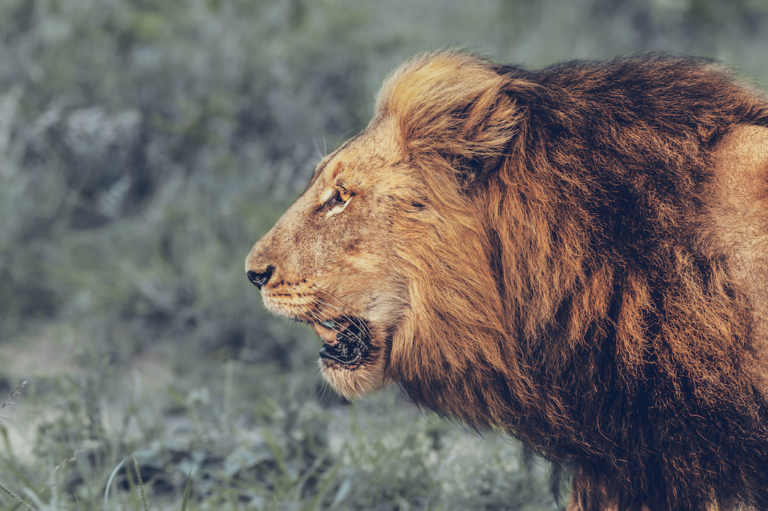LIONS
Species in Peril:
LIONS

The king of the jungle is now vulnerable
A day in the life
The lion is a large cat that inhabits the grasslands of Africa. Lions spend much of their time resting and they are inactive for about 20 hours per day. This apex predator hunts wildebeest, zebra buffalo, and giraffes when they are active.
Most of the hunting is done by the lionesses who often work together. However, when it comes time to eat the male eats first.
It's all in the social game
Unlike other big cat species, the lion is a social animal. They live in groups called prides. The pride may be as big as 40 individuals and includes all related females, cubs, and one or more resident males.
The male will normally be attached to pride for two years before he is driven off by another male lion. Males defend the pride’s territory, while the female is responsible for hunting and raising the cubs.
The lion's mane
The male lion is often recognized for its prominent mane, which was always thought after by hunters. This mane signals the apparent fighting success of the male.
The mane gets bigger as the lion ages.
The rule of thumb is that a darker, fuller mane indicates a healthier lion. Female lions favor males with dense, dark manes.
A Few More Facts About Lions
- A lion’s roar can be heard from up to five miles away
- Lion cubs are born blind. Their eyes do not open until seven days after birth
- A lion is also born with spots, which fade as the lion reaches adulthood
- A lion is the world’s second-biggest cat, only the tiger is bigger
- Lions require on average about 7 kg of meat per day
- Lions can get most of their water from plants
- Lions like to hunt during storms when it is harder for prey to see and hear theL
Species Name
Panthero Leo
Estimated Population
20,000 globally
Conservation Status
Vulnerable
Range
Sub-Saharan Africa and a small population in India.
Reasons for Population Decline
Habitat loss
Poaching
Loss of prey


